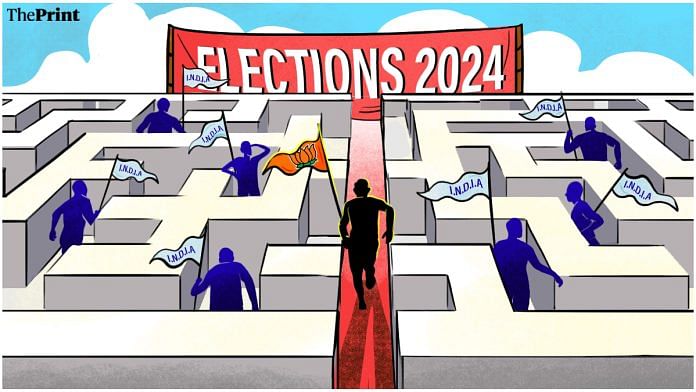The Opposition parties which have come together under the INDIA (Indian National Developmental Inclusive Alliance) umbrella are scheduled to meet a third time next week. If they are not careful, what awaits them down the road is a repeat of 1971.
Then too, an Opposition alliance got together and tried to oust a strong Prime Minister. The slogan was: ‘Indira hatao’ (remove Indira). Indira Gandhi countered with the more resonant ‘Garibi hatao’ (remove poverty). It is easy to see why the then Prime Minister won.
Today’s opposition parties have come together to say Modi hatao (remove Modi), while Narendra Modi talks of ‘Amrit Kaal’, which is the aspirational equivalent of yesteryear’s ‘Garibi hatao’.
It is admittedly early days, but so far INDIA (a pretentious and confusing name) has focused on cobbling together some basic arrangements. The next step has to be spelling out why the voter should buy into its goal of removing Modi, and why the alliance would be a better bet.
One assumes that INDIA will not plan a repeat of the Congress campaign of 2019, when Rahul Gandhi focused on a charge of personal corruption, since it didn’t cut much ice. Nor can it hope for a negative vote (as happened in post-Emergency 1977 and to a degree in 2014) since Prime Minister Narendra Modi’s personal popularity seems to dwell at stratospheric levels.
To be sure, many people are bitterly critical of Modi for his strong-arm record of weakening the institutions that might have made a powerful executive more accountable. But those inclined to vote on this basis are likely to be relatively few, and even they can see that many of the parties in the Opposition (the Congress included) are also inclined to abuse their power when in office.
If the Opposition hopes to win, the new alliance will have to offer more than criticism of the government; it will have to offer a manifestly superior alternative.
That won’t be easy. To start with, the Opposition has no leader to set up against Narendra Modi — an important reason why the Bharatiya Janata Party (BJP) has done consistently better in national as opposed to state elections.
The Opposition will also have limited resources to throw into the fray, and is likely to run a less organised campaign than the ruling party, although experience shows that money power cannot trump voter mood if it is hostile. Why would the mood be hostile? Inflation and unemployment are likely candidates.
Also read: CAA, Article 370 abrogation, cow protection laws — what would Oppn bloc change if elected in 2024
To neutralise that, Mr Modi’s pitch will include having delivered on the BJP’s core agenda: Building the temple in Ayodhya, getting rid of Jammu and Kashmir’s special status, and ending what his voter base sees as the appeasement of minorities.
He can also spin a narrative, with the usual mixture of fact and exaggeration, about enhancing national pride by raising India’s global profile (though there is criticism abroad about his civil liberties record), becoming more assertive on national security (if we can forget China for the moment), and putting India on course to becoming the third-largest economy.
He could additionally focus on the various digitisation initiatives, a range of welfare measures, and the visible signs of development — building the country’s physical infrastructure and introducing fast inter-city trains.
With memories of demonetisation and the similarly disastrous Covid lockdown of 2020 fading, many voters would look at the record and be willing to vote Modi a third term.
But it is early days, and the Opposition alliance may in due course hammer out an agreed programme detailing what it will do if elected. This would likely promise a range of freebies, as was done by the Congress in Karnataka recently, such being also the instinctive approach of the Aam Aadmi Party.
The alliance might also focus on those left behind by the K-shaped pattern of growth; it worked in 2004 against the Vajpayee government. But in adopting a welfarist-populist platform, the alliance is likely to veer away from promising market-oriented economic reform.
The real risk, though, is that the core assumption — that the votes for a candidate sponsored by an alliance will at least equal the sum total of its parts — proves to be facile.
By special arrangement with Business Standard.
Also read: Can a good acronym give currency to a group that’s lost relevance? The curious case of BRICS today



